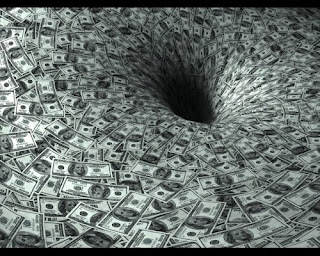by: Bryan Baumgart - May 30, 2012
It always amazes me when the same folks that despise lobbyists can somehow rationalize support for unions.
Unions ARE lobbyists!
They may be WORSE than lobbyists because they not only employ the same tactic of bribery used by lobbyists, but they also use much more sinister tactics such as bullying and threats!
The dictionary definition of "lobbyist":
- a group of persons who work or conduct a campaign to influence members of a legislature to vote according to the group's special interest.
This is what we see being played out in Wisconsin today to Governor Scott Walker, who had the bravado to stand up to the unions and take away their right of collective bargaining over pensions and healthcare. The unions have already spent over $60 million dollars in an attempt to recall Walker. They have succeeded in forcing a recall election to be held in Wisconsin on June 5th, despite the fact that Walker's actions have been overwhelmingly successful.
It is interesting that the 99% Occupy Movement folks aren't up in arms over the division of class contained within union systems. Think of it this way. The upper class is made up of top union officials, the middle class being union members, and the lower class being the taxpayers. The top union officials aren't really concerned with protecting jobs or even the rights of union members, they are concerned with protecting unions. As long as powerful unions exists, the ability to blackmail government officials (or corporations in the case of private unions) for lavish perks will remain a reality. The top officials (upper class) welcome extravagant salaries and benefits while tossing a bone to union members (middle class) to appease them and maintain support. Who pays for this extravagance? The taxpayers (lower class) of course! So who will stick up for the taxpayer's interest if government officials fall to bribery and bully tactics?!
I have family and friends who are union members and although they don't agree with the politics pushed by the unions, they state that, "Unions protect my job." What they fail to realize is that because of union politics, there won't be jobs for unions to protect! Need an example? Just look to Detroit and the automaker unions, where the cost of lavish perks has made it impossible for once dominant American auto companies to compete with foreign auto companies out of China and Japan. And once again, average citizens are on the hook. To cover the cost of the union's demands, American auto companies have been forced to raise the prices of their autos while passing that cost onto consumers. And when GM still couldn't compete, it was the taxpayers that were forced to bail them out to the tune of almost $50 billion dollars!
Union supporters argue that foreign automakers have the advantage through cheap labor; however, foreign automakers such as Toyota efficiently produce more autos here in America than the domestic auto makers. What's the difference? You guessed it...the absence of unions!
And then of course there is the union employees themselves who are bullied by the unions. Employees forced to join unions against their will. Employees forced to contribute money that is spent to elect candidates or to push policies to which they are personally opposed.
Which segues nicely into two points that were brought up above. Price increases and minimum wage increases.
Unions support an ever increasing minimum wage. Raising minimum wage leads to inflation and therefore doesn't leave anyone better off than where they started. In fact, it leaves them worse off in many instances as companies are forced to move jobs overseas to remain competitive on the world marketplace, or close up shop all together. Current wage is better than NO wage. A better answer is to battle inflation to increase the purchasing power at current wages.
Many folks call corporation evil and call for an increase in their taxes. "Pay your fair share!, they cry." They fail to realize that corporations never have and never will pay taxes. They simply pass along taxes to consumers (the same people calling for tax increases on corporations) through price increases. Calls for increasing corporate taxes equate to calls for increasing taxes on consumers!
Unions at one time served a useful purpose. The champion of fair labor practices, wages, working conditions, etc. They were set up to protect the common man. Now who will protect the common man from the unions?!!!
READ MORE BELOW:


